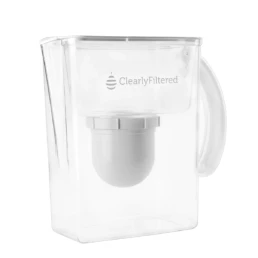As we delve deep into countless medical journals to uncover the latest on Integrative Medicine’s approach to kidney health, we are always reminded of the value of your time. Our commitment remains steadfast in curating and succinctly summarizing these vital studies for you. Welcome to the November Research and News.

Social Deprivation Drives Geographic Disparities in End-Stage Kidney Disease Incidence in France
This ecological study analyzed 102,226 new end-stage kidney disease (ESKD) cases across 34,830 French municipalities (2012–2021) to investigate the role of social deprivation in regional disparities of ESKD incidence.
Using data from the national REIN registry and a Bayesian spatiotemporal model, researchers found that social deprivation—measured by the French European Deprivation Index (EDI)—was the strongest predictor of ESKD incidence, accounting for 34.7% of its geographic variability.
The relative risk of ESKD increased by 10% for each standard deviation rise in deprivation, and this association remained stable over time. Although diabetes prevalence mediated a small portion (15%) of the effect, deprivation’s impact persisted independently of clinical and environmental factors such as air pollution or healthcare access.
The model suggested that reducing deprivation in France’s most disadvantaged areas could have prevented over 23,000 ESKD cases during the study period.
Why is this important?
These findings reveal that social deprivation is a powerful, independent driver of kidney failure risk, even in countries with universal healthcare.
Addressing disparities in education, income, housing, and living environments could prevent thousands of ESKD cases—highlighting the urgent need for kidney care models and public health interventions that target social determinants of health, not just medical risk factors.
Shift Work and Kidney Stone Risk: The Role of Lifestyle Factors
This prospective study of 226,459 UK Biobank participants, followed for a median of 13.7 years, investigated how shift work and lifestyle behaviors influence the risk of kidney stone formation.
Researchers found that people who did shift work had a 15 percent higher risk of developing kidney stones (hazard ratio 1.15, 95% CI 1.04–1.26), even after adjusting for other factors.
The risk was particularly elevated among workers under 50 years old and those with less physically demanding jobs. Mediation analysis showed that smoking, sleep duration, sedentary time, body mass index, and fluid intake partly explained this association.
Why is this important?
Shift work disrupts circadian rhythms and can promote lifestyle patterns that increase kidney stone risk, such as dehydration, poor sleep, and metabolic imbalance.
Recognizing shift work as a modifiable occupational risk factor underscores the need for preventive strategies—such as encouraging hydration, balanced nutrition, regular exercise, and healthy sleep habits—to protect kidney health among shift workers.
Inflammation and Cyst Expansion in Polycystic Kidney Disease
This study explored how inflammation contributes to cyst growth in polycystic kidney disease (PKD).
Using mouse models with different genetic causes of PKD, researchers found that immune cells called macrophages build up in the kidneys as cysts enlarge.
However, this inflammation was not what started the cysts—it developed alongside them and helped them grow larger over time. The buildup of macrophages and related inflammatory signals appears to make cyst progression worse, even though it doesn’t trigger cyst formation in the first place.
Why is this important?
The study shows that inflammation plays a key role in worsening PKD by promoting cyst expansion. This suggests that treatments aimed at reducing kidney inflammation or blocking macrophage activity could help slow down disease progression and protect kidney function.
Join us to end the kidney disease epidemic
Diet Quality and Risk of Chronic Kidney Disease Progression in People with Metabolic Disorders
This large UK Biobank study followed over 200,000 adults to see how adherence to different dietary patterns affected the risk of developing and progressing chronic kidney disease (CKD), especially among people with metabolic conditions like diabetes or hypertension.
Participants who most closely followed the American Heart Association (AHA) diet had the lowest risk of developing CKD—about 37 percent lower than those with the poorest adherence.
Other healthy diets, such as the EAT-Lancet and DRRD, showed weaker protective effects, while unhealthy plant-based diets increased CKD risk by 44 percent.
Among those with type 2 diabetes, following the AHA diet was particularly beneficial, reducing the risk of CKD progression by 17 percent. However, diet quality did not significantly affect mortality after CKD had already developed.
Why is this important?
The study highlights the power of a heart-healthy diet in slowing kidney damage among people with metabolic disorders. Following a balanced, nutrient-rich dietary pattern—like the AHA diet—may help prevent CKD before it starts or delay its progression, underscoring the importance of early lifestyle interventions in at-risk populations.
Protein Powders and Shakes Contain High Levels of Lead
A new investigation by Consumer Reports found that more than two-thirds of 23 popular protein powders and shakes contained more lead per serving than experts consider safe to consume in an entire day—some exceeding this level by over tenfold.
The findings show that heavy metal contamination in protein supplements has worsened over the past 15 years. Plant-based powders had the highest lead concentrations, averaging nine times more than dairy-based products.
Two plant-based powders were deemed unsafe for any regular use, while several others should be limited to once a week.
Even though the detected levels are not immediately toxic, experts warn that regular use of contaminated supplements could increase long-term health risks, especially since most people already consume adequate protein through diet.
Why is this important?
The report underscores growing safety concerns about the supplement industry’s lack of regulation. With no federal limits on heavy metals in protein powders and no FDA premarket testing, consumers may unknowingly expose themselves to harmful contaminants.
Nutrition experts emphasize that most people can meet their protein needs through whole foods, avoiding unnecessary and potentially hazardous exposure from supplements.
Review article of the month
How to Cure Autoimmune Glomerulonephritis
This review proposes a new framework for treating autoimmune glomerulonephritis (GN) and podocytopathies by focusing on the underlying immune mechanisms rather than solely on proteinuria or histologic classification.
The authors argue that therapy should be guided by disease acuity—whether rapidly progressive, relapsing, or chronic—since each requires different treatment priorities. Rapidly progressive GN may need urgent complement inhibition and antibody removal before B–cell–targeted therapy, while relapsing or chronic forms call for sustained immunologic control, either through B-cell monotherapy or combination regimens, depending on the complexity of autoantigens involved.
The review also emphasizes that all forms of GN eventually lead to CKD, making CKD management an integral part of treatment rather than “supportive care.” By aligning therapy with disease mechanisms and integrating modern CKD care, this approach aims to improve long-term kidney outcomes and move closer to true disease remission or cure.
Join here to receive FREE monthly updates on the latest research in Integrative Nephrology and tips on managing kidney disease straight to your inbox.
We would love to hear your feedback. Let us know what you think of these educational materials and if you would like us to focus on specific topics. Please email us at info@inkidney.com.









